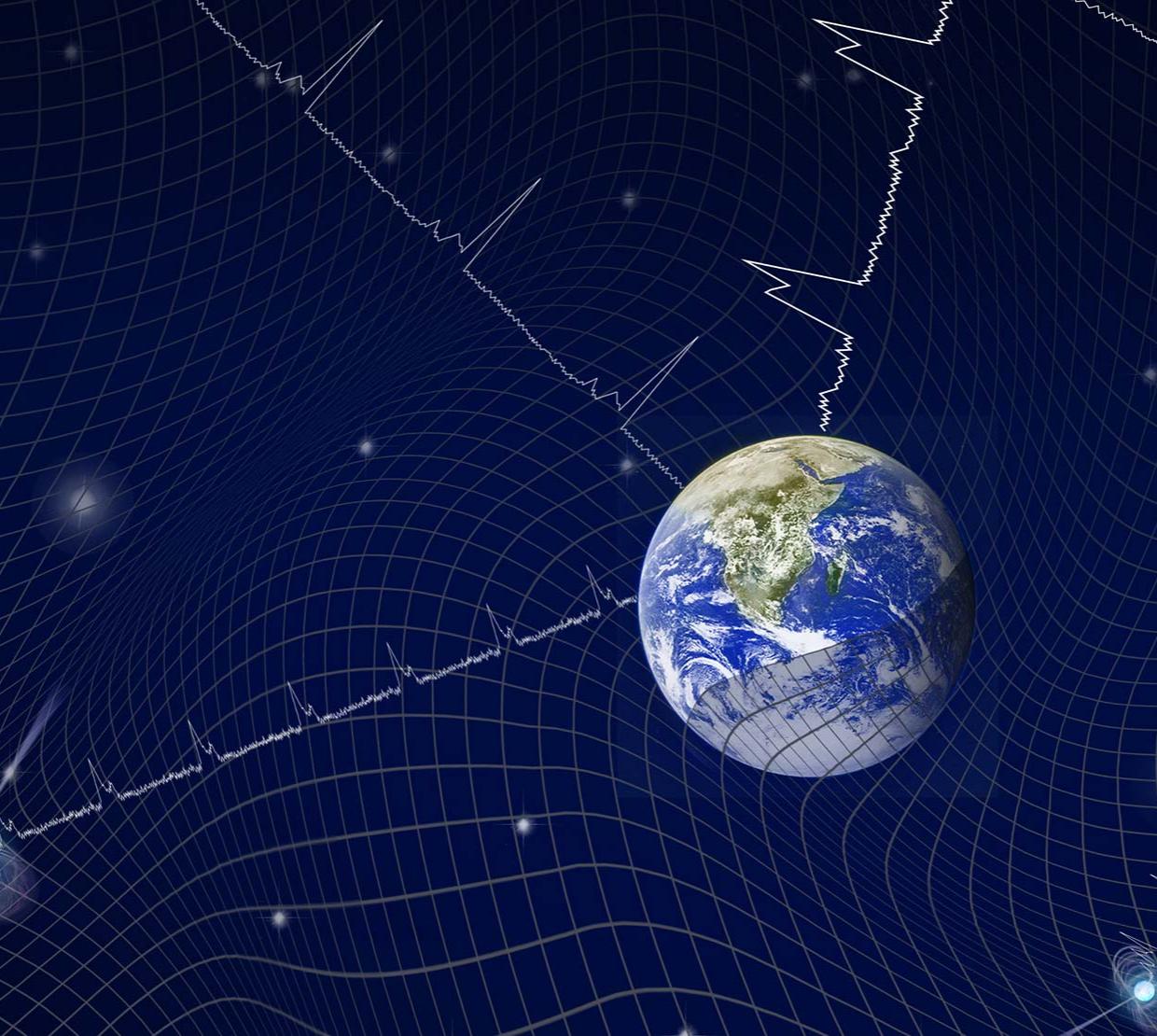“If we are able to confirm that the signal we are seeing is produced by gravitational waves from supermassive black holes, we will learn how structure in the universe forms and grows over cosmic time,” said Siemens who joined the College as a professor of physics from the University of Wisconsin- Milwaukee in May 2019.
The National Science Foundation (NSF) Physics Frontiers Center, the North American Nanohertz Observatory for Gravitational Waves, or NANOGrav, comprises almost 200 scientists and students in the U.S. and Canada. It includes a mix of R1 institutions, liberal arts colleges and national labs. It is currently centered at UWM and Siemens is the principal investigator of that NSF award.
Hints of gravitational waves
This week, the NANOGrav project unveiled hints of new knowledge that may unravel profound questions about the Universe when it announced detection of a strong signal potentially attributable to gravitational waves. The findings, which appeared in late December in The Astrophysical Journal Letters, reveal the detection of unexplained fluctuations, consistent with the effects of gravitational waves, in the timing of 45 pulsars spread across the sky and measured over a span of 12-and-a-half-years.
“It is incredibly exciting to see such a strong signal emerge from the data,” says Joseph Simon, lead researcher on the paper. “However, because the gravitational-wave signal we are searching for spans the entire duration of our observations, we need to carefully understand our noise. This leaves us in a very interesting place, where we can strongly rule out some known noise sources, but we cannot yet say whether the signal is indeed from gravitational waves. For that, we will need more data.” Simon obtained his PhD at UWM in 2016 and was advised by Siemens.
“If we are able to confirm that the signal we are seeing is produced by gravitational waves from supermassive black holes, we will learn how structure in the universe forms and grows over cosmic time.”
Eight OSU undergraduates work with the NANOGrav team, sifting through profiles of signals collected by telescopes and determine which signals are likely to be pulsars rather than radio frequency interference. Some students are also trained on operating the telescopes remotely in order to oversee the observations of potential or confirmed pulsars.
"The findings in the paper are highly significant, as they mark an important step forward in our pulsar timing abilities,” said Genevieve Connolly (’21, Physics). “I am excited because we may be able to confirm a gravitational wave detection in the future. But even data with no gravitational waves can help us improve our detection methods, so whether or not we detect gravitational waves, I am optimistic about the continued improvement of our methods as well as being able to help expand the pulsar array.”
Two graduate students on the team analyze pulsar data to search for traces of gravitational waves. Their in-depth analysis helped to clarify what subset of pulsars in their timing array showed evidence of the common signal discovered in the paper.
“The paper shows that the odds of the signal existing in the data are about 10,000 to one,” said Jerry Sun, a third-year Ph.D. student in physics and co-author of the paper. “This is a big jump from the last data set. This is such cutting-edge science that has been in the theory for decades, and only recently has been evidenced by real data.”
While the team is optimistic about preliminary findings, they are not ready to say with certainty that the strong signal they have detected is indeed from gravitational waves. For that, they will need to analyze more of the data. At this point, though, they are able to strongly rule out some known noise sources such as errors in the data collection or interference from matter in our own solar system.
“Despite a lot of work that needs to be done to get us to the point where we want to be, the results of the paper make us extremely positive that we have something special in our data,” said Nima Laal, a third-year physics graduate student and co-author of the paper. “If we can prove that the common process we see can be attributed to a gravitational wave background produced dominantly by super massive black hole binaries – through inclusion of more data, NANOGrav scientists will be the first to successfully claim detection of a stochastic gravitational wave background.”
Potential next steps
The scientists’ findings set up direct detection of gravitational waves as the next hopeful major step. In order to confirm the direct detection of a signature from gravitational waves, NANOGrav’s researchers will need to find a distinctive pattern in the signals between individual pulsars. At this point, the signal is too weak for such a pattern to be distinguishable. Boosting the signal requires NANOGrav to expand its dataset to include more pulsars studied for even longer lengths of time, which will increase the array’s sensitivity.
The present findings are based on 12-and-a-half-year data set, and there is already two-and-a-half more years of data to analyze for the next phase, Siemens explained. “This is where we hope to find the smoking gun.”
“Proving the existence of gravitational waves from supermassive black holes would be a major contributor to our understanding of the universe.”
Students working on the project marvel at the hands-on opportunity to work on project with such far-reaching ramifications. “Proving the existence of gravitational waves from supermassive black holes would be a major contributor to our understanding of the universe,” said Jaden Downing (’22, physics, religious studies). “I am looking forward to seeing what we uncover in the next steps of this project and excited to be contributing to what could likely be a major discovery.”
NANOGrav has been supported by a $14.5M, five-year grant plus a $2.7M one-year supplement through 2021. Siemens is optimistic a new multi-million grant application will be approved soon, which will extend NANOGrav operations for the next five years and move the center to Oregon State University.





